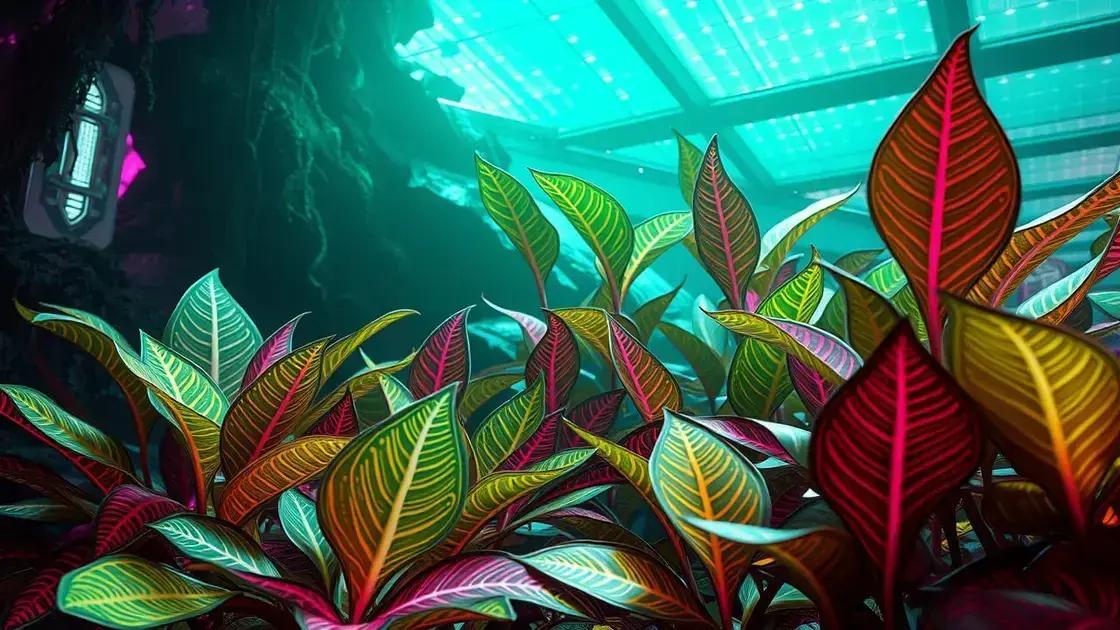How to Care for a Dieffenbachia House Plant: 5 Essential Tips for Success
How to care for a dieffenbachia house plant can often be puzzling for many plant enthusiasts. With their lush foliage and tropical appeal, dieffenbachias are wonderful additions to any indoor space. However, understanding their specific needs is crucial for maintaining their health. Explore the best practices for watering, lighting, and troubleshooting common issues to keep your dieffenbachia thriving.
Table of Contents
ToggleEssential watering techniques for dieffenbachia
How to care for a dieffenbachia house plant involves understanding essential watering techniques to keep your plant healthy. These techniques ensure your plant receives the right amount of moisture while preventing root rot.
Understanding Dieffenbachia’s Water Needs
Dieffenbachia plants thrive in a humid environment, making proper watering crucial. Here are some key points to consider:
- Soil moisture: Check the soil moisture regularly. The top inch of soil should be dry before watering.
- Water quality: Use room temperature water, preferably filtered or distilled, to avoid chemicals found in tap water.
- Frequency: Water your dieffenbachia every 1-2 weeks, depending on humidity and temperature.
When to Water
Timing can impact how effectively you care for your dieffenbachia. Consider the following:
- Water in the morning to allow excess moisture to evaporate during the day.
- Avoid watering in the evening to reduce the risk of fungal diseases.
Signs of Overwatering or Underwatering
Identifying watering issues early on is vital for dieffenbachia plant care. Watch for:
- Overwatering: Yellowing leaves and root rot signify too much water.
- Underwatering: Brown leaf tips and drooping indicate your plant needs more moisture.
Tips for Maintaining Humidity
Creating a humid environment can improve your dieffenbachia plant’s health significantly:
- Group plants together to maintain moisture in the air.
- Use a pebble tray with water under the pot to increase humidity.
- Consider misting the leaves occasionally, especially in dry conditions.
By mastering these essential watering techniques, you can ensure that your dieffenbachia plant flourishes. For more on maintaining house plants effectively, check out exploring indoor gardening techniques.
Lighting requirements for optimal dieffenbachia growth

Lighting requirements for optimal dieffenbachia growth is crucial for the long-term health of your houseplant. Understanding the light preferences of dieffenbachia will help you create an ideal environment for growth.
Ideal Light Conditions for Dieffenbachia
Dieffenbachia thrives in bright, indirect light, making the right lighting setup essential. Here’s what you need to know:
- Best Light Type: Bright, indirect light is ideal. Direct sunlight can scorch the leaves.
- Low Light Adaptability: Although dieffenbachia can tolerate low-light conditions, growth may slow down.
- Artificial Light Use: If natural light is insufficient, consider using fluorescent or LED grow lights.
Signs of Inadequate Lighting
Monitoring your dieffenbachia for symptoms of improper lighting is important. Look for these indicators:
- Yellowing leaves may indicate too much direct sunlight or not enough light.
- Stretched or leggy growth suggests your plant is not receiving enough light.
Adjusting Light Exposure
To optimize light exposure for your dieffenbachia, follow these steps:
- Place your plant near a window that receives filtered sunlight.
- Rotate the pot every few weeks to ensure even light distribution.
- Use sheer curtains to diffuse harsh sunlight if necessary.
Importance of Seasonal Adjustments
As seasons change, so do light conditions. Adapt your dieffenbachia’s setup as follows:
- In winter, consider moving your plant closer to windows to capture more sunlight.
- In the summer, be cautious of harsh midday sun exposure.
By adjusting your lighting arrangement to meet the needs of your dieffenbachia, you can foster healthy growth. For more insights on indoor plant care, visit exploring indoor gardening techniques.
Common dieffenbachia problems and how to fix them
Common dieffenbachia problems and how to fix them can help you maintain a healthy plant. Understanding potential issues is essential for successful dieffenbachia care.
Identifying Common Issues
Here are some frequent dieffenbachia problems you might encounter:
- Yellow leaves often signal overwatering or insufficient light.
- Brown leaf tips can indicate underwatering or low humidity levels.
- Stunted growth is usually a result of inadequate nutrients or light.
Solutions for Yellow Leaves
If your dieffenbachia has yellow leaves, follow these steps:
- Check soil moisture. Allow the top inch of soil to dry before watering.
- Move your plant to a brighter location if it’s not receiving enough light.
- Ensure your pot has adequate drainage to prevent root rot.
Fixing Brown Leaf Tips
If you notice brown tips on the leaves, consider these adjustments:
- Increase humidity by misting the leaves or using a humidifier.
- Water your plant more consistently, ensuring it doesn’t dry out completely.
Addressing Stunted Growth
For dieffenbachia that isn’t growing, try these methods:
- Fertilize every 4-6 weeks during the growing season with a balanced fertilizer.
- Increase light exposure if the plant appears leggy.
Preventive Care Measures
To avoid common dieffenbachia problems, implement these preventive strategies:
- Regularly inspect your plant for any signs of pests or disease.
- Avoid drastic temperature changes to ensure optimal growth conditions.
By understanding and troubleshooting these common dieffenbachia issues, you can maintain a vibrant and healthy plant. For further tips on indoor plant care, check out exploring indoor gardening techniques.
In conclusion
Caring for a dieffenbachia house plant requires understanding its unique needs, including proper watering techniques, optimal lighting, and common issues that might arise. By applying the tips outlined in this guide, you can ensure your dieffenbachia thrives and adds beauty to your home. Remember to keep monitoring your plant and adjust its care as needed. For additional tips on enhancing your indoor garden, don’t hesitate to explore more resources.

